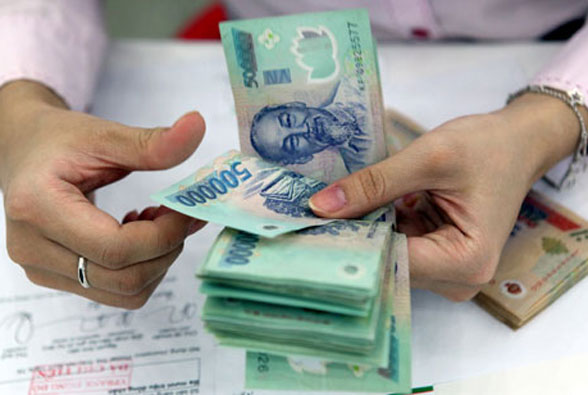Foreign enterprises call for less frequent wage increases
 |
Nguyen Chi Thanh, chief financial officer of French company Scavi, said that the company has member companies in many provinces in Vietnam, including Dong Nai, Lam Dong, and Thua Thien Hue, with about 10,000 employees in total, so labour costs will increase remarkably after the new minimum wage comes into effect.
For example, at the plant in Bien Hoa in Dong Nai, as per the new regulation, the company will have to spend an additional VND200 million ($9,300) on its 1,000 employees’ wages.
“So many increases in such a short period of time in recent years have caused difficulties for the company,” Thanh said, adding that not only did wages increase, but the company’s expenses on social and medical insurance of employees have also been increasing.
Bosch Vietnam, though not having as many employees as Scavi, said it also saw a big increase in labour costs.
Thanh said that in recent years, the Vietnamese economy has been growing at less than 10 per cent per annum and decelerating, yet the minimum wage has been rising at more than 10 per cent a year. He said that these tendencies are unreasonable and make it difficult for companies, especially small and medium-sized ones.
“Small and medium-sized companies make up most of the Vietnamese business environment. There should be more time between consecutive increases, giving enough time for companies to adjust,” Thanh said.
Thanh also noted that Scavi sent a document to Vietnam Textile & Apparel Association, which is gathering opinions from companies in the sector to make a proposal to the government about widening the gap between minimum wage increases.
“Textile and garment companies in Vietnam have to spend a bigger percentage of their earnings on insurance and other fees than in rival textile and garment producing countries. Without support, including widening the gap, Vietnamese textile and garment companies will find it hard to compete internationally,” he added.
A representative of the Japan Business Association in Vietnam commented that the annual minimum wage increase should also be based on the expected economic growth for that year, adding that too large an increase would restrict companies from hiring.
Thanh said that the Vietnamese textile and garment industry saw growth in the past years but has been constantly underachieving expectations.
“Growth used to be 14-15 per cent a year, but now it is only one third of that,” Thanh said. “In this context, companies need more support to increase competitiveness. There should be careful consideration before each minimum wage increase.”
| RELATED CONTENTS: | |
| Regional minimum wages increase in new year | |
| 7.3 per cent minimum wage proposal meets qualms | |
What the stars mean:
★ Poor ★ ★ Promising ★★★ Good ★★★★ Very good ★★★★★ Exceptional
Latest News
More News
- Global partnerships key to Vietnam’s IFC development (December 26, 2025 | 16:18)
- Vingroup pulls out of bid to invest in North-South high-speed railway (December 26, 2025 | 11:42)
- Strengthening supply chains through trade promotions and customs reform (December 24, 2025 | 14:00)
- PM orders investment model for North–South high-speed rail (December 22, 2025 | 17:43)
- LS Eco Energy to invest in Vietnam rare earth sector (December 22, 2025 | 17:31)
- Government moves to establish International Financial Centre (December 21, 2025 | 21:00)
- Vietnam's IFC to target global investment flows (December 21, 2025 | 18:00)
- Two national hospitals expand capacity with new facilities (December 20, 2025 | 09:00)
- Ha Tinh breaks ground on major Vingroup industrial and energy projects (December 19, 2025 | 18:24)
- EVN launches major power infrastructure projects nationwide (December 19, 2025 | 18:17)
















 Mobile Version
Mobile Version